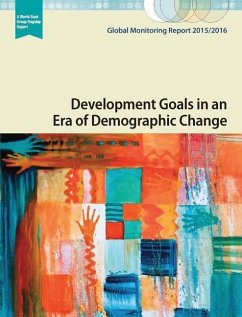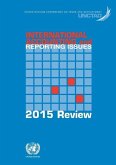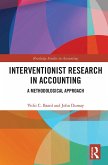The Global Monitoring Report 2015/2016: Development Goals in an Era of Demographic Change details the progress toward the global development goals and examines the impact of demographic change on achieving these goals. Part I examines global development progress, the unfinished development agenda, and the policy opportunities ahead. The report assesses progress toward ending extreme poverty by 2030 and in promoting shared prosperity, and it outlines the measures necessary to scale up impact over the horizon of the Sustainable Development Goals. The report unveils the new poverty line of $1.90 a day and provides updated estimates for the number of people living in extreme poverty, which shows further declines. In 2015 the global poverty rate is forecast to decline to 9.6 percent of the world's population, the first time it has reached single digits. At the same time, the report makes the case that the depth of remaining poverty, the unevenness in shared prosperity, and the persistent disparities in non-income dimensions of development call for urgent action. Part II analyzes how profound demographic shifts could alter the course of global development. Global demography is at a turning point: The world’s population is growing m ore slowly, while it is aging at an unprecedented rate. Within these broader global trends considerable diversity can be found across regions and countries. While the higher-income countries that drive global growth are rapidly aging, the lower-income countries comprising the centers of global poverty are much earlier in their demographic transition and continue to grapple with high fertility rates and rapid population growth. Demographic changes bring both opportunity and risk; the report argues for demography-informed policy approaches to tilt demographic change in favor of achieving the development goals. With the right policies, demographic change can become one of the most consequential development opportunities of our time. The Global Monitoring Report 2015/2016 is written jointly by the World Bank Group and the International Monetary Fund, with substantive inputs from the African Development Bank, the Asian Development Bank, the European Bank for Reconstruction and Development, the Inter-American Development Bank, and the Organisation for Economic Cooperation and Development.
Bitte wählen Sie Ihr Anliegen aus.
Rechnungen
Retourenschein anfordern
Bestellstatus
Storno








